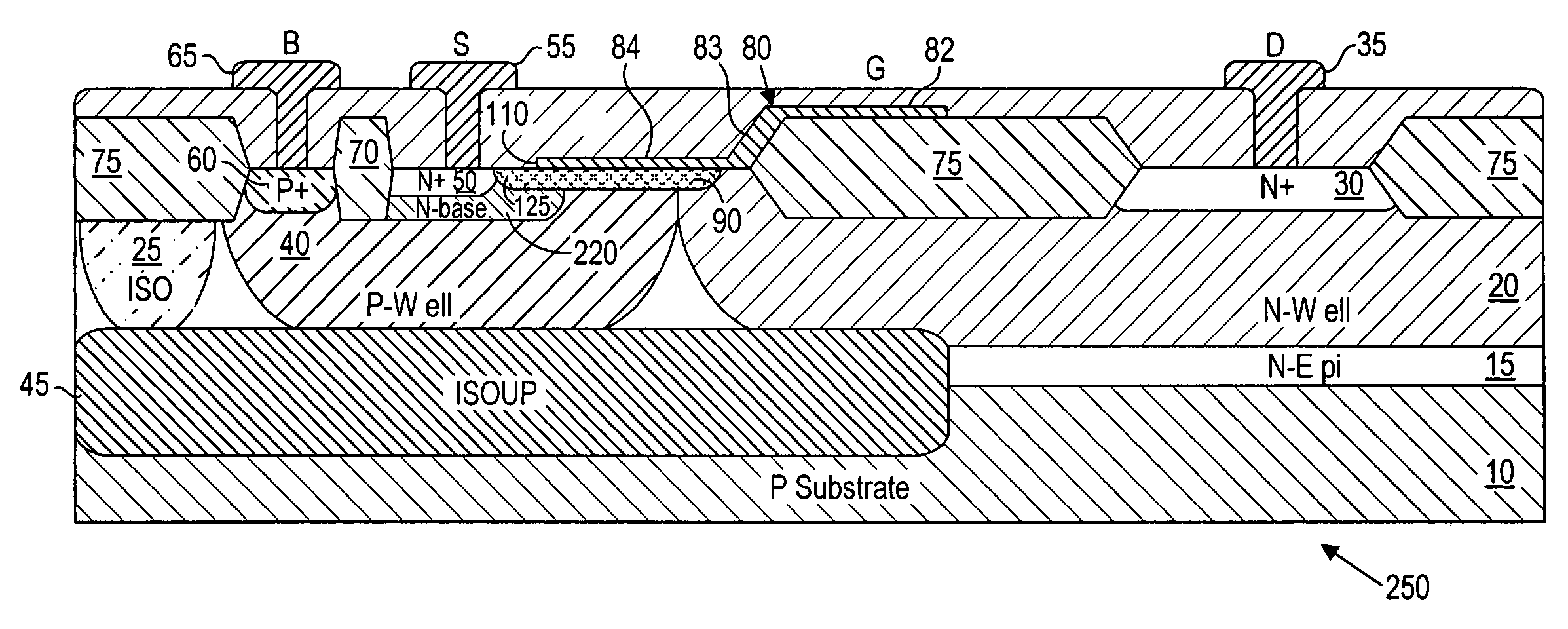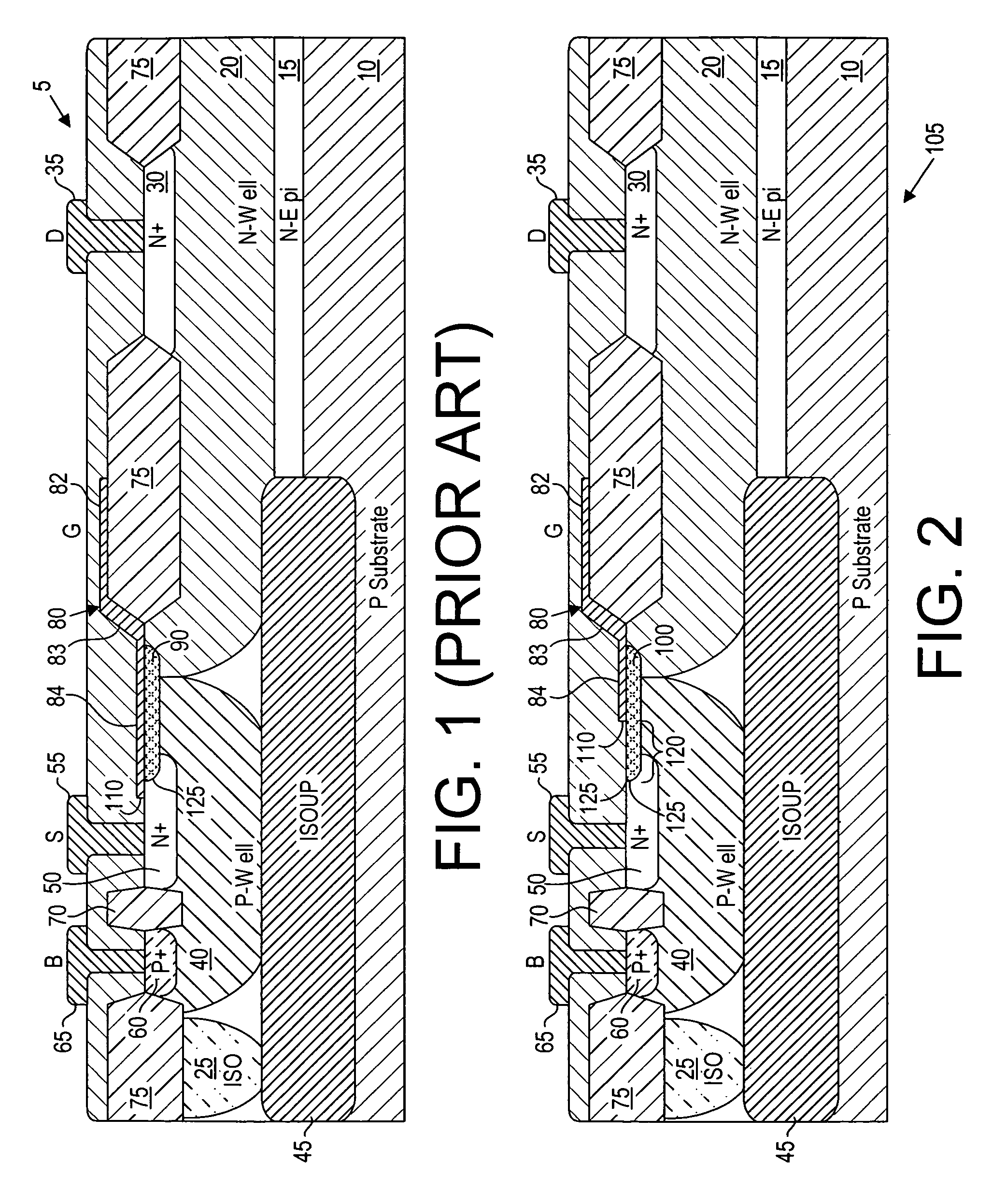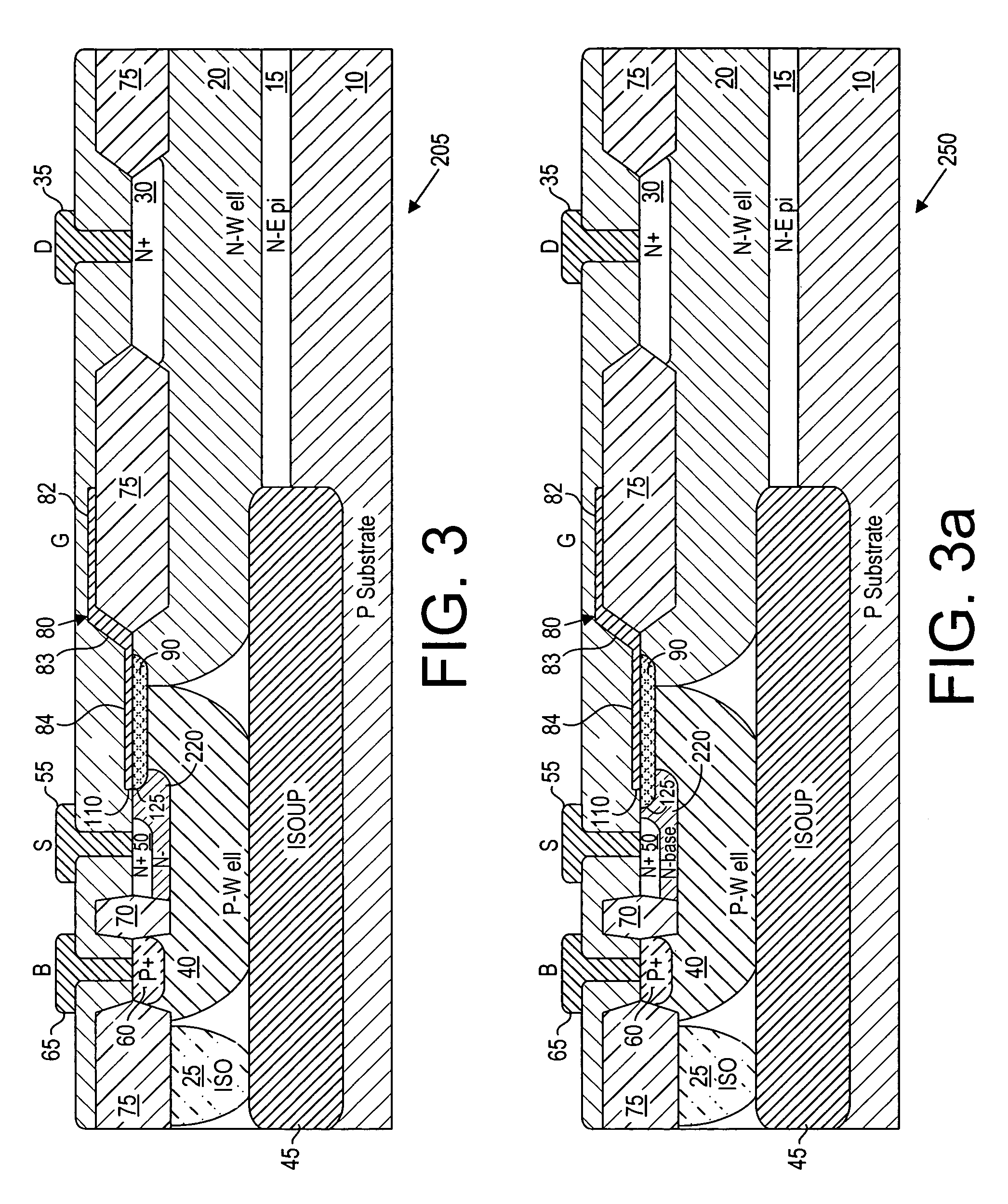Ballast resistors for transistor devices
a transistor and ballast resistor technology, applied in the field of integrated circuit transistors, can solve the problems of reducing the gate bias voltage required to turn on the transistor, affecting the operation of the transistor, so as to achieve the effect of increasing the voltage and adding the voltage margin
- Summary
- Abstract
- Description
- Claims
- Application Information
AI Technical Summary
Benefits of technology
Problems solved by technology
Method used
Image
Examples
Embodiment Construction
[0027]Referring to FIG. 2, an exemplary embodiment of a transistor within the present invention is illustrated. In particular, an LDMOS transistor 105 is shown, which has improved performance relative to LDMOS transistor 5 of FIG. 1. Common features of transistors 5 and 105 have the same reference numbers. While P-type semiconductor regions are referred to herein as first conductivity type regions, and N-type semiconductor regions are referred to herein as second conductivity type regions, the use of P-type and N-type semiconductor regions may be reversed. In the figures, heavily doped regions are depicted as N+ or P+, and more lightly doped regions are depicted with a N− or P−.
[0028]In one aspect, LDMOS transistor 105 achieves this improved performance compared to LDMOS transistor 5 of FIG. 1 through an extended depletion implant region 100 that functions as a source ballast resistor.
[0029]In particular, implant region 100 is of the second conductivity type, and is formed in a chan...
PUM
 Login to View More
Login to View More Abstract
Description
Claims
Application Information
 Login to View More
Login to View More - R&D
- Intellectual Property
- Life Sciences
- Materials
- Tech Scout
- Unparalleled Data Quality
- Higher Quality Content
- 60% Fewer Hallucinations
Browse by: Latest US Patents, China's latest patents, Technical Efficacy Thesaurus, Application Domain, Technology Topic, Popular Technical Reports.
© 2025 PatSnap. All rights reserved.Legal|Privacy policy|Modern Slavery Act Transparency Statement|Sitemap|About US| Contact US: help@patsnap.com



